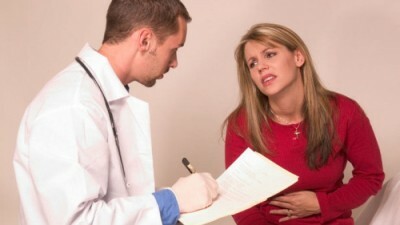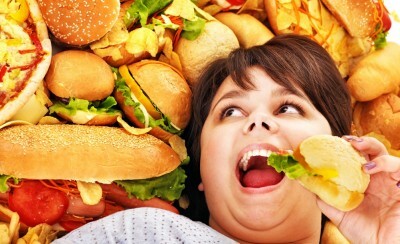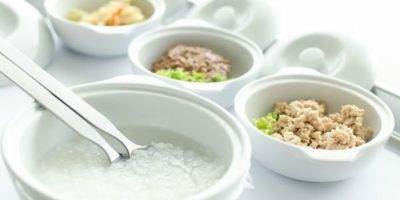1 Reasons for the appearance of
To prevent mucosal damage in the event of a reflux, the body includes a whole complex of protective mechanisms containing the following physiological actions:
- barrier function of the gastroesophageal junction and esophageal sphincter;
- purification is esophageal;
- resistance of the esophageal canal lining;
- rapid and timely disposal of the cast;
- control of synthesis of stomach acid.
-
 IMPORTANT TO KNOW! Gastritis? Ulcer? To have a stomach ulcer not turned into cancer, drink a glass. ..Read the article & gt; & gt;
IMPORTANT TO KNOW! Gastritis? Ulcer? To have a stomach ulcer not turned into cancer, drink a glass. ..Read the article & gt; & gt;
The failure of these mechanisms triggers the occurrence of gastroesophageal reflux.

Recommended to consult
- Symptoms of reflux disease of esophagitis
- Treatment of duodenal ulcer
- Causes and treatment of chronic gastritis in adults
- Effective remedy for gastritis and gastric ulcer
The main reasons for throwing stomach contents are:
- disruption of the esophageal sphincter;
- appearance of episodes of relaxation of the lower esophageal sphincter;
- lack of clearance;
- occurrence of painful pathological changes in the functioning of the gastrointestinal tract, which increase the degree of disruption of the system.
The causes of reflux, provoked by a decrease in sphincter tone, occur when you drink beverages that include caffeine, with some medications, smoking, alcohol abuse, pregnancy.
The failure of the mechanisms for preventing the filling of stomach contents can be triggered by an increase in intra-abdominal pressure. This type of disorder occurs when developing obesity, ascites, or bloating. In addition, intra-abdominal pressure rises during the period of gestation.
The appearance of a diaphragmatic hernia in the body provokes the progression of the disorder. When this malfunction occurs, the effect of reducing pressure on the lower part of the esophagus in the chest is created. Hernia of the diaphragm is detected in half of people over 50 years old. Hasty and abundant food contributes to swallowing a large volume of air, which provokes a change in intragastric pressure. An increase in this indicator leads to the onset of gastroesophageal reflux.
-
 Gastroenterologist. IMPORTANT: "I beg you, if you began to worry about abdominal pain, heartburn, nausea, do not in any way do gases. .."Read more & gt; & gt;
Gastroenterologist. IMPORTANT: "I beg you, if you began to worry about abdominal pain, heartburn, nausea, do not in any way do gases. .."Read more & gt; & gt;
Duodenal ulcer provokes the appearance of casting of contents when eating a large amount of food rich in fats, containing peppermint and spicy seasonings. These components cause the delay of the food lump in the stomach cavity, which causes an increase in pressure.
2 Clinical picture
Gastroesophageal reflux is characterized by a variety of symptoms that can manifest themselves in isolated form and in the form of complexes. Symptoms of violation, according to the results of research, are revealed in 40% of the inhabitants of developed countries.

The most common symptoms of the disorder are:
- heartburn;
- regurgitation;
- pain in the sternum or in the left breast;
- pain when swallowing;
- occurrence of prolonged cough and hoarseness in the voice;
- development of processes destroying the tooth enamel.
Symptoms, even in a pronounced manifestation, do not fully reflect the degree of development of reflux. Very often such symptoms as a change in the intestinal acidity and its reduction to less than 4 are not accompanied by negative consequences.
ADVICE FROM THE MAIN GASTROENTEROLOGIST
Korotov SV: "I can recommend only one remedy for the rapid treatment of Ulcer and Gastritis, which is now recommended by the Ministry of Health. .." Read the reviews & gt; & gt;
Developing symptoms lead to changes in the esophagus. They are evaluated by esophagoscopy using biopsy. This technique allows not only to assess the extent of the lesion, but also to make a differential diagnosis.
Radiography of the esophagus with the use of barium preparations makes it possible to identify the presence of anatomical abnormalities in the structure of the esophagus and stomach, which contribute to the formation of GER.Such anatomical disorder may be a hernia of the diaphragm.
The use of a 24-hour monitoring of intraepithelial acidity in the process of examination of the organism makes it possible to identify the signs of reflux in humans in the absence of bright external symptoms of the disorder.
3 Treatment measures
Treatment in the development of a disorder should primarily be aimed at reducing and eliminating manifestations of pathology. Treatment should provide a reduction in damaging properties, which has gastric contents, the additional treatment used must promote the esophageal cleansing. Drugs that are used in therapy should provide high-quality protection of the gastric mucosa.

In the treatment of the disorder, it is important to carry out activities aimed at compliance with general rules that contribute to reducing the expression of reflux. These requirements include:
- Activities aimed at normalizing the body weight of a person. In patients who are overweight, when carrying out appropriate measures, the amount of casting from the stomach cavity to the space of the esophagus decreases. This is due to the normalization of the lower sphincter.
- Refusal of smoking and reduction of the volume of alcohol consumed, restriction of food intake with high fat content, chocolate and coffee drinks. Exclusion from the diet of acidic products, which can trigger the occurrence of heartburn.
- Food intake in small portions.
- Food intake should be done no later than 2 hours before bedtime.
- Avoiding physical activity that increases intra-abdominal pressure.
In the event that treatment with the help of measures aimed at observing the general requirements that contribute to reducing the manifestations of reflux does not bring a positive result, medication is prescribed.
4 Conducting drug therapy
Treatment with medications is carried out by taking antacids, which are preparations containing in their composition salts of aluminum and magnesium. These compounds help neutralize hydrochloric acid. In addition, treatment with antacids reduces the activity of enzymes, bile acids and lysolecithin. All these compounds can damage the gastric mucosa.

Treatment is best done using antacid preparations in the form of a gel, which forms small drops in the esophagus and stomach, which contributes to the strengthening of the therapeutic effect. At the moment, the most popular products are Almagel, Fosfalugel, Maalox, Remagel, which contain chemical compounds of aluminum and magnesium in different proportions.
Antacids are taken 30 minutes before meals and at bedtime. The drug is best taken in a supine position and in small sips.
If treatment with antacids does not work, prokinetics and antisecretory drugs are recommended. As the first, Domperidone is used, which should be taken only in accordance with the recommendations of the attending physician.
If the patient is diagnosed with erosive esophagitis, the course of treatment continues for 2 months.
Those suffering from esophagitis should give up most of the bad habits forever.
If you can not get a positive effect with medical treatment, as well as when complications arise, the surgical method is used.
Surgical treatment is carried out in the form of endoscopic application of the gastroesophageal joint, radiofrequency ablation, gastro cardiopexy and laparoscopic fundoplication according to Nissen.
5 Prophylaxis and development prognosis
Developing gastroesophageal reflux in 10-15% of patients causes complications. With a severe course of the disease, there is a high probability of ulcers and narrowing of the lumen, the opening of esophageal bleeding. Gastroesophageal reflux is able to develop as an autonomous nosological form and as a syndrome in the development of peptic ulcer disease or in the case of progression of diabetes mellitus.
Treatment of a disease is always more difficult than warning. A huge role in supporting the healthy state of the digestive sphincter and in the prevention of such an ailment as gastroesophageal reflux is played by the following factors: proper nutrition and careful medication taking in strict accordance with the recommendations given by the treating doctor. When abdominal wall reductions occur, the surface is cleaned of acidic contents thrown from the stomach cavity. The main mechanisms involved in cleaning the mucosa are:
- motor activity;
- the laws of gravitation;
- bicarbonates contained in the saliva.
In case of a violation of dietary regimens, uncontrolled use of medications and abuse of smoking and alcohol, there is an increased effect on aggressive mucosa of the esophagus, which leads to the formation of a deficiency of natural defense mechanisms. Such a situation leads to the development of a disease capable of delivering unpleasant feelings to the patient and provoking the development of complications that may adversely affect the health of the sick person.
- 1 Reasons for the appearance of
- 2 Clinical picture
- 3 Treatment measures
- 4 Conducting drug therapy
- 5 Prevention and prognosis of development
Gastroesophageal reflux is a digestive disorder that is associated with frequent and regular ingestion of contents from the stomach cavity to the esophagus. This process is accompanied by the appearance of inflammation - esophagitis. Gastroesophageal reflux occurs when acidity in the cavity of the esophagus decreases and approaches the analogous parameters of the stomach. Reduction occurs due to the ingestion of acidic stomach contents into the cavity of the esophagus. Prolonged contact of the mucosa covering the walls of the latter, with acid content, which contains digestive enzymes, leads to the formation of foci of inflammatory processes on the walls of the former.
Do you have gastritis?
GALINA SAVINA: "How easy is it to cure gastritis at home for 1 month. A proven method - write down a recipe. ..!"Read more & gt; & gt;
The components of bile, enzymes and bicarbonates, which are part of the digestive secretion contained in the duodenum, can also cause a severe damaging effect on the surface of the mucosa, if they enter the lumen of the esophagus. The components of the duodenum penetrate into the esophagus after they pass through the stomach cavity.
Gastroesophageal reflux is a normal physiological phenomenon if it meets certain criteria. Such determining factors are the following:
- appears such a phenomenon immediately after ingestion;
- occurrence is not accompanied by an uncomfortable condition;
- frequency and duration of events throughout the day is considered insignificant;
- in the night period the frequency of the appearance of reflux is small and the duration also.
The phenomenon is considered painful if it meets certain characteristics, such as:
- high frequency and duration of reflux episodes;
- occurs at any time of day;
- throwing up the contents causes discomfort and the appearance of clinical symptoms of inflammation and trauma to the mucosa covering the walls of the esophagus.
In the medical literature there are incorrect names of the phenomenon, such as "esophageal reflux", "gastro-esophageal reflux", "gastroesophageal reflux".
The phenomenon of reflux is considered to be common in breast feeding of children, which occurs when the child is incorrectly applied to the breast.



